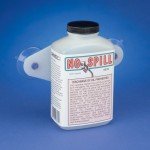DHeckrotte
Guru
I’m tired of burping diesel out the vent and into the water. My new tanks cannot be monitored for ‘nearly’ full, since the new fill hose is neither straight nor dip-stick-able. Of course, spilling diesel is undesirable, illegal, and potentially expensive.
What to do? What do current boats have? What have y’all done?
I’m thinking of installing Racor LG100 fuel/air separators. BoatUS recommends them.
What to do? What do current boats have? What have y’all done?
I’m thinking of installing Racor LG100 fuel/air separators. BoatUS recommends them.


